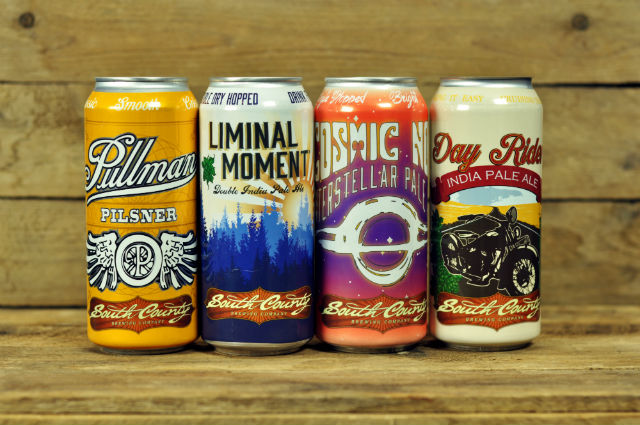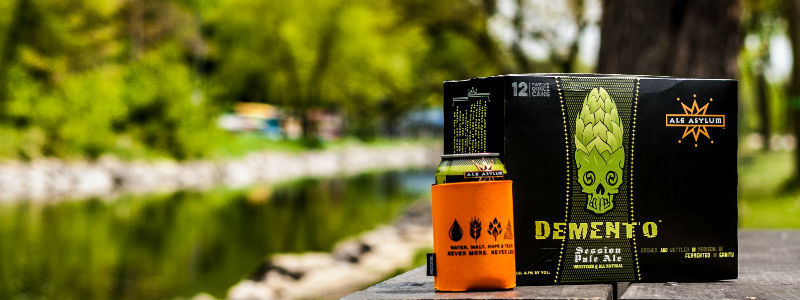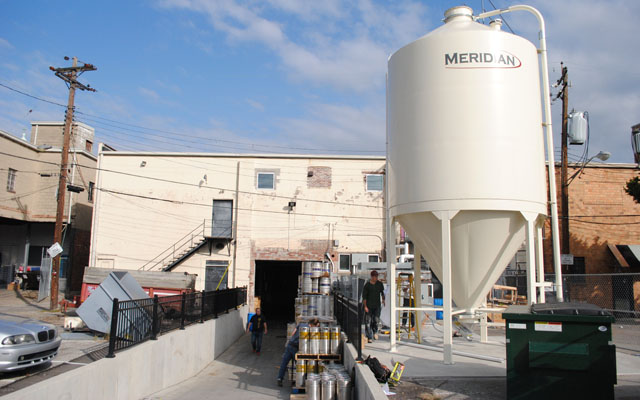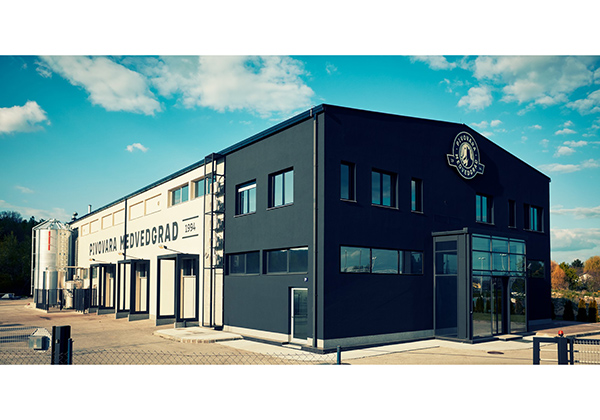
The first beer can was officially sold on January 24, 1935 by Gottfried Krueger Brewing Co. and produced by American Can Co. after a two-year effort to make the proper packaging for canned beer after Prohibition ended.
Now, 80 some years later, an unofficial holiday called “National Beer Can Appreciation Day” celebrates that occasion. It comes during a time where craft beer has embraced the style rapidly over the past few years.
In Fawn Grove, Pennsylvania, South County Brewing recently made the switch to 16-ounce cans, selling its products in four-packs after running a dual format for about six months, said SCBC managing partner, JR Heaps.
“We have seen a tremendous overall sales increase as people seem to prefer cans in our markets, along with more placements at stadiums and music venues,” Heaps said. “We can verify the beer holds its profile longer and tastes fresher after several weeks. It’s cheaper to package overall and allows us to release one offs more frequently as the mother carton no longer seems to matter at retail.
“I even find myself only looking for cans when I personally buy beer.”
So why has canned craft beer become so popular?
“Canning our products helps us be more sustainable and increases the shelf life of our products or packaging in glass,” said Hathaway Dilba of Madison, Wisconsin’s Ale Asylum. “We tell our customers that cans are great for camping, golfing, boating, biking, fishing, and all the “-ings” they enjoy.”
Dilba noted that younger craft beer enthusiasts don’t appear to be affected by the stigma of canned beer as much as the “pioneer” craft beer consumers that typically voice their apprehension about canning.
“The most common reasoning that we hear from this population is that beer tastes better to them in a bottle or draft,” she said. “Given that we do all of our packaging in-house, we are in a place to explain that the technology with the canning process has greatly advanced to ensure the liquid tastes the same across all three packaging options.”
The expansion of craft canned beer has made it harder and easier from a production standpoint, added Rogue Ales & Spirits president Brett Joyce. The brewery recently began canning its products to let their brand be more flexible for a consumer that wants to enjoy the cans in many outdoor activities.
“Certainly there are more options for canning lines now than ever before,” Joyce said, “but the increase in demand has also forced can suppliers to increase their minimums which requires brewers to be more creative in finding packaging solutions for smaller batch, limited products.”
The Alchemist’s Jen Kimmich added that it is easier to find vendors now than before, however, canning line fabricators often have waiting lists so the wait to get equipment can be long. Cans are the same — they can be difficult to acquire due to high demand.
“Since we need to order full trailers of each printed can at a time, we only order two printed cans,” Kimmich explained, using those for its flagships, “Heady Topper” and “Focal Banger.” For all of the other beers the Vermont brewery makes, Kimmich orders labels and uses a label applicator on the canning line.
“This gives us the ability and freedom to rotate our canned offerings as we see fit,” she said. “We don’t have to worry about storage and we don’t have to worry about minimum order sizes.”
Wild Goose Canning Beer Ambassador Roger Walz believes the country is experiencing a movement to get back to small scale, sustainable manufacturing. Cans can be a microcosm of that.
“People want more choices, and are willing to travel farther, explore more, and even spend a bit more to enjoy something that is deemed ‘artisan,'” he said. “The bigger companies have seemingly limitless financial powers and can flood markets with their product, and advertise in ways that seems invasive. Smaller, craft brewers have to work harder to reach a broad market, generally with less financial clout. By offering product that is in many cases, superior, craft brewers depend on word of mouth to gather new devotees. Producing styles that have been previously draft only, or, released in large format bottles allows smaller brewers to showcase creativity and use top notch ingredients.”
Advancements in new package styles also help shift the older notions, Walz added.
“The Crowler has revolutionized “take out” beers,” he said. “Whereas growlers are great, there are inherent downsides to a growler. The seal being at the top of that list. In many brewpubs and tasting rooms, customers can have a beer on tap during their visit, then take a Crowler home with them to enjoy. The positives of a can, no light infusion, weight, freshness all factor into a positive user interaction. The smaller volume of a Crowler is also a benefit to many who do not, or cannot finish a growler before the product begins to lose carbonation, affecting the taste negatively. Whether it be a Crowler, or small scale packaging run allows customers to try new and unique products that may never have seen packaging due to cost or limited releases on draft. It highlights brewers creativity and use of fresh ingredients to break outside of the older norms that were prevalent from the macros in years past.”







Be the first to comment